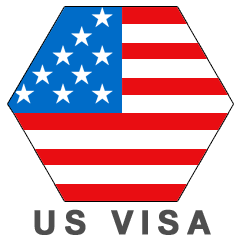Adjustment of Status. When a foreign fiancé(e) enters the U.S. on a K1 visa, the next crucial step is applying for Adjustment of Status (AOS) to become a permanent resident (green card holder). This process must be initiated after marriage to the U.S. citizen petitioner within the 90-day validity period of the K1 visa. Below is a detailed breakdown of the AOS process for K1 visa holders, especially those navigating this process from Thailand.
1. Eligibility for Adjustment of Status
K1 visa holders are eligible to apply for Adjustment of Status if they meet the following criteria:
- Marriage: The foreign fiancé(e) must have married their U.S. citizen petitioner within 90 days of entering the U.S. on a K1 visa.
- Lawful Entry: The K1 visa holder must have entered the U.S. lawfully, following all visa conditions.
- No Previous Immigration Violations: The applicant should not have committed any immigration violations, such as overstaying a previous visa or engaging in unauthorized work before filing AOS.
2. Required Forms and Documentation
The K1 visa holder must submit a complete Adjustment of Status package to U.S. Citizenship and Immigration Services (USCIS). The required forms and documents include:
a) Form I-485 (Application to Register Permanent Residence or Adjust Status)
This is the main form used to apply for AOS. The form collects the applicant’s personal information, immigration history, and other relevant data.
b) Form I-864 (Affidavit of Support)
The U.S. citizen spouse must file this form to demonstrate their financial ability to support the foreign spouse. It ensures that the foreign spouse will not become a public charge by requiring the U.S. spouse to meet certain income thresholds.
c) Form I-693 (Medical Examination Report)
Although a medical exam is completed during the K1 visa process, applicants may need to submit an updated medical exam for their AOS application.
d) Form I-765 (Application for Employment Authorization)
K1 visa holders can file this form if they wish to obtain a work permit while waiting for their green card approval. This allows them to work legally in the U.S. before their permanent residency is granted.
e) Form I-131 (Application for Travel Document)
This form is used to apply for Advance Parole, which permits the K1 visa holder to travel outside the U.S. while their AOS is pending without jeopardizing their immigration status.
3. Supporting Documents
In addition to the forms, several documents must be submitted, including:
- Proof of Marriage: A copy of the marriage certificate as evidence that the K1 visa holder married the U.S. petitioner within the required timeframe.
- Passport and K1 Visa: Copies of the foreign spouse’s passport, including the visa stamp and I-94 entry record.
- Evidence of Bona Fide Marriage: Supporting documents such as joint bank accounts, leases, or utility bills demonstrating that the marriage is genuine and not solely for immigration benefits.
- Photos: Passport-sized photos of both the applicant and the U.S. citizen spouse.
4. Application Fees
The fee for filing Form I-485 is $1,140, plus an additional $85 for biometrics (fingerprinting and photo). There are no fees for filing Forms I-765 and I-131 when submitted concurrently with the AOS application.
5. Processing Timeline
The Adjustment of Status process can take several months to complete. After filing, the K1 visa holder will receive a receipt notice and a biometrics appointment notice. The applicant will also be required to attend an interview at a local USCIS office. During the interview, both spouses must demonstrate that their marriage is genuine and answer questions about their relationship.
6. Conditional Green Card
If the K1 visa holder’s AOS application is approved, they will receive a conditional green card valid for two years. Conditional status applies to marriages less than two years old at the time of AOS approval. After two years, the foreign spouse must file Form I-751 (Petition to Remove Conditions on Residence) to obtain a 10-year green card.
7. Potential Challenges for Thai Applicants
a) Language Barriers
K1 visa holders from Thailand may face challenges during the AOS process due to language barriers, especially during the interview stage. It’s important to ensure that all documents are properly translated and that the applicant is prepared for the interview.
b) Cultural Adjustments
Thai applicants may also face cultural differences in proving the bona fide nature of their marriage. Providing a wide range of supporting evidence is critical to addressing any cultural nuances that may arise during the USCIS review process.
c) Advance Parole for Travel to Thailand
If the Thai K1 visa holder needs to return to Thailand temporarily while their AOS is pending, obtaining Advance Parole is essential to prevent abandonment of the AOS application. Without it, leaving the U.S. can result in denial of the green card application.
8. Final Steps: Citizenship
After living in the U.S. for three years as a permanent resident and maintaining continuous residency, K1 visa holders married to U.S. citizens may apply for naturalization (U.S. citizenship). This process requires passing a civics test, proving good moral character, and demonstrating English proficiency.
Conclusion
The Adjustment of Status (AOS) process for K1 visa holders allows Thai citizens and other foreign nationals to transition from a temporary fiancé(e) visa holder to a permanent resident (green card holder). Although the process involves detailed paperwork, legal formalities, and an interview, K1 visa holders who diligently follow the steps can secure their permanent residency and continue building a life in the U.S. alongside their American spouse.
